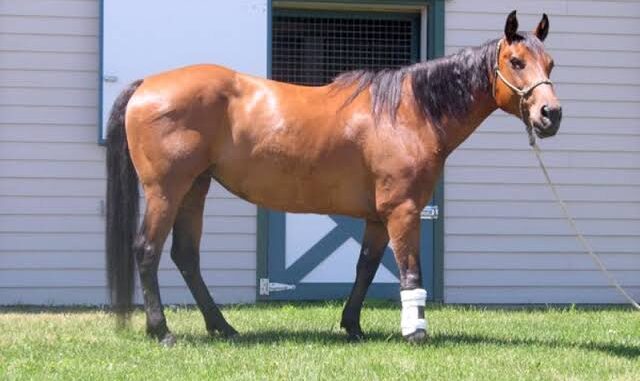
30th June 2025 – (Hong Kong) The recent collapse of Seasons Wit at Happy Valley on June 25th, 2025, epitomises racing’s most visceral tragedy: a thoroughbred fracturing its foreleg mid-race, triggering a three-horse pile-up that injured jockeys Lyle Hewitson, Jerry Chau, and Karis Teetan before the horse was euthanised on-track.
This routine outcome – sanctioned globally as “humane” – represents not inevitability but institutional failure. Hong Kong Animal Post’s revelatory investigation into equine prosthetics shatters the fatalistic dogma that fractured limbs necessitate death.
With documented cases of amputated racehorses thriving for decades through pioneering veterinary interventions, The Hong Kong Jockey Club faces an ethical imperative: redirect infinitesimal fractions of its HK$40.1 billion annual community contributions towards establishing Asia’s first Equine Rehabilitation Centre, preserving the very athletes who generate its wealth.
Dr. Ted Vlahos’ Wyoming clinic demonstrates the attainable miracle: over 100 horses granted renewed life through amputation and prosthetics, with 90% surviving beyond one year and many becoming breeding assets. The Quarter Horse stallion Triple Vodka raced competitively after septic coffin joint amputation; Spanish Riddle lived five years post-1973 right foreleg amputation; Saratoga Six reached twenty-four despite a career-ending sesamoid fracture.
These triumphs stem from refinements in surgical technique since Barrie Grant’s landmark 1985 intervention on Boitron. Contemporary procedures involve neurectomy to eliminate stump sensitivity, transfixation pins redistributing weight from healing tissue, and titanium-graphite prosthetics with BOA cable systems preventing slippage during gallops. Critically, support limb laminitis – often cited to justify euthanasia – resolves post-amputation when managed through devices like the Mega Ultima support boot. Hong Kong’s absence from this veterinary vanguard contradicts its racing supremacy.
Whilst the Club rightly celebrates 140 years of community investment through youth initiatives and the HK$1.4 billion anniversary fund, its stewardship neglects the core contributors: the horses. The operational dissonance is staggering. HKJC’s 2024/25 financials reveal HK$136.1 billion racing turnover yet zero budget allocation for thoroughbred rehabilitation. Contrast this with its meticulous care for retired champions through the Thoroughbred Retraining Centre – a model that proves post-career stewardship is possible. The Club’s Charities Trust disburses HK$10.2 billion annually; diverting 0.05% would establish a rehabilitation facility rivalling Vlahos’ clinic, where prosthetics cost HK$195,000 per horse.
Such expenditure pales against the HK$29.9 billion paid in government duties. Ethically, the status quo violates the Club’s founding principle: “to act continuously for the betterment of society.” Euthanising horses like Seasons Wit – who owed their injuries to entertainment-for-profit – constitutes a moral debt unpaid. Racing’s social licence hinges on demonstrating reverence for equine athletes beyond their wagering utility. As Hong Kong Animal Post articulates, the question isn’t technical feasibility but institutional will: “If humans benefit from prosthetic technology after injuries sustained in dangerous professions, why deny horses equivalent mercy?” Implementing this vision requires tripartite collaboration. First, HKJC must fund a dedicated surgical wing at its existing equine hospital, staffed by global experts like Vlahos. Second, the Trust should subsidise lifelong prosthetic maintenance for owners unable to afford recurring costs – a barrier preventing many from choosing amputation. Third, regulatory amendments must permit rehabilitated horses to re-enter breeding programmes, transforming them from liabilities into genetic assets.
The precedent exists: Just Steel resumed training five months after a right front cannon fracture and returned to racing in December 2024. Critics cite convalescence challenges – the daily prosthetic cleaning, pressure sore risks, and paddock safety requirements. These are manageable through existing horsemanship frameworks. Hong Kong’s grooms already master intricate bandaging techniques; extending this to prosthetic maintenance demands training, not revolution.
Moreover, Hong Kong’s climate – less humid than Wyoming’s – reduces infection risks. As the world’s premier racing jurisdiction, Hong Kong must lead this paradigm shift. Establishing the Equine Rehabilitation Centre wouldn’t merely save lives – it would redefine global standards, proving that excellence encompasses compassion.
The technology exists. The funding is trivial. The moral obligation is undeniable. For Seasons Wit and countless others, the finish line need not be death. It can be renewal.
Leave a Reply